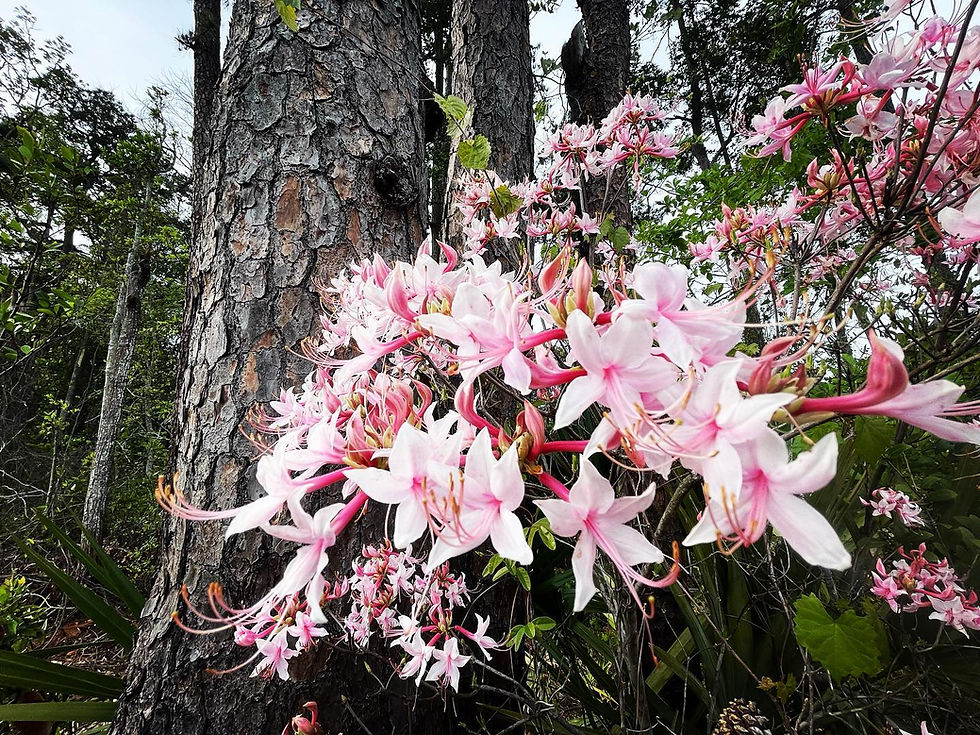1. Adaptability: Native plants are well-suited to the local climate and soil conditions, making them more resilient and easier to maintain than non-native species.
2. Biodiversity: Native plants provide habitat and food for local wildlife, helping to support a healthy ecosystem and preserve biodiversity.
3. Water Conservation: Native plants require less water than non-native species, reducing the need for irrigation and helping to conserve water resources.
4. Pest Resistance: Native plants have evolved to resist local pests and diseases, reducing the need for pesticides and other chemical treatments.
5. Aesthetics: Native plants can add unique beauty and character to a landscape, with a variety of colors, textures, and shapes that reflect the local environment and culture.
Overall, using native plants in Northeast Florida landscapes is not only beneficial for the environment, but also for the homeowner's wallet and time.

"Pinxter azalea, also known as Rhododendron periclymenoides, is a deciduous shrub that is native to the eastern United States, including the Northeast and Southeast regions. It typically grows to a height of 6-10 feet and has a spread of 4-6 feet.
The leaves of the Pinxter azalea are elliptical in shape, with a glossy green color and a slightly hairy texture. In the spring, the shrub produces clusters of fragrant, pink to white flowers that are trumpet-shaped and have a yellow-orange blotch on the upper petal. The flowers attract pollinators such as bees and butterflies.
Pinxter azalea prefers moist, well-drained soils and partial shade to full sun. It is commonly found in woodland areas, along streams and wetlands, and in other moist habitats. The shrub is also popular in landscaping and can be used as a specimen plant or in mass plantings.
Overall, Pinxter azalea is a beautiful and fragrant native shrub that is well-suited to the eastern United States and provides important habitat for pollinators."


Comments